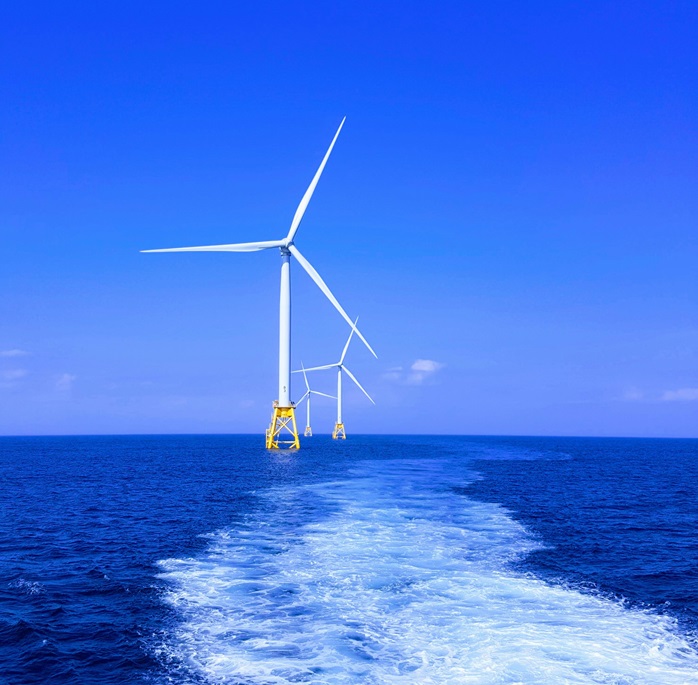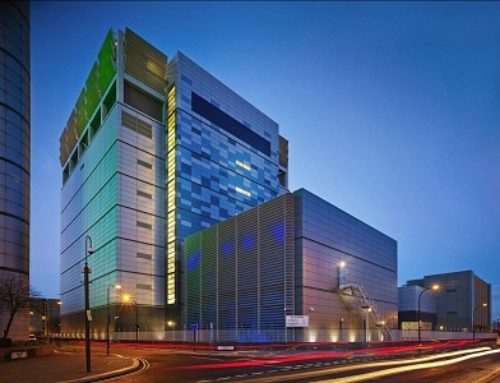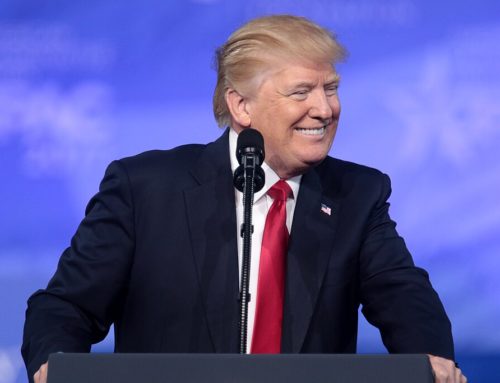1. UAE FDI up 28%
According to a report by the United Nations Conference on Trade and Development (UNCTAD), greenfield FDI announcements in the UAE rose by 28% in Q3 2023, marking the second-highest number recorded in the world after the US. The report also stated that the UAE has seen significant growth in the information and communications technology (ICT) sector, with ICT spending expected to reach $6.27bn by 2024. The UAE government has been working to diversify its economy away from hydrocarbons and stimulate growth in the private sector.
The UAE has been attracting significant amounts of FDI in recent years, with FDI inflows reaching $22.74bn in 2022, a 10% increase from 2021. The country provides several incentives to foreign investors, such as the opportunity for investors of different nationalities to establish and own companies fully, and expedited licensing and incorporation procedures for cutting-edge technology companies looking to establish their presence in the UAE. The legal forms of FDI projects in the UAE include public joint stock companies, private joint stock companies, limited liability companies, limited partnership companies, and partnership companies.
The promising sectors for foreign investment in the UAE include fintech, e-commerce, agritech, health care, education, tourism, space, logistics services, information and communications technology, manufacturing, medical tourism, renewable energy, media and entertainment, creative industries, gaming, and smart cities. The UAE’s focus on these sectors is expected to drive growth in the country’s economy and attract more foreign investment in the coming years.
2. Chinese legacy chip flood

ling tang unsplash
The US is concerned about a potential “flood” of legacy semiconductors from China, which could disrupt the global chip industry and lead to further trade restrictions. The majority of the semiconductor market in terms of units is made up of older-generation “legacy” chips, which China has invested in enough capacity to oversupply and disrupt chip industries in other countries. The US has already imposed export controls on cutting-edge chips and equipment to China in October 2022 to thwart China’s emerging domestic chip industry and use of advanced chips to boost its military capabilities. Now, there are calls for even more restrictions. A letter published by the US Select Committee on the Chinese Communist Party (SCCCP) called for “urgent action” on foundational chips, defined as those that are 28 nanometres (nm) or larger. The risk of China flooding the US and global markets with foundational semiconductors is echoed by analysts and evidenced by data.
Implications
The potential “flood” of legacy semiconductors from China could have significant implications on the global chip industry and lead to further trade restrictions. The majority of the semiconductor market in terms of units is made up of older-generation “legacy” chips, which China has invested in enough capacity to oversupply and disrupt chip industries in other countries. The US has already imposed export controls on cutting-edge chips and equipment to China in October 2022 to thwart China’s emerging domestic chip industry and use of advanced chips to boost its military capabilities. Now, there are calls for even more restrictions. A letter published by the US Select Committee on the Chinese Communist Party (SCCCP) called for “urgent action” on foundational chips, defined as those that are 28 nanometres (nm) or larger. The risk of China flooding the US and global markets with foundational semiconductors is echoed by analysts and evidenced by data.
The implications of this flood are far-reaching. It could lead to a disruption in the global chip industry, which could have a cascading effect on other industries that rely on chips, such as the automotive and consumer electronics industries. The US and other countries may impose further trade restrictions on China, which could lead to a trade war and further economic instability. The US and other countries may also invest more in their domestic chip industries to reduce their reliance on China, which could lead to a shift in the global supply chain. The implications of this flood are complex and multifaceted, and it remains to be seen how they will play out.
3. New Nordic Offshore Wind Project

shaun dakin unsplash
TotalEnergies has acquired an 85% stake in the 240MW Jammerland Bugt offshore wind project and a 72.2% stake in the 165MW Lillebaelt South nearshore wind project, both in Denmark. They are among the nine open-door projects confirmed by the Danish Energy Agency in December 2023. The move is part of TotalEnergies’ integrated development in electricity, and the company has signed an agreement with European Energy to develop offshore wind projects across Denmark, Finland, and Sweden. The two offshore wind projects, with a total capacity of 405MW, are expected to come online by 2030.
The electricity from these sites will be sold on the wholesale market or through corporate power purchase agreements, helping companies reduce their carbon emissions. TotalEnergies and European Energy are also planning to form a joint venture to develop and operate large-scale offshore wind projects in Sweden and Finland. They intend to participate in the forthcoming offshore wind tenders in Denmark, leveraging their combined expertise. TotalEnergies brings to the partnership its experience in managing large-scale projects and its capabilities in marketing electricity in merchant markets. European Energy adds its track record in developing greenfield projects and engaging with stakeholders in the Nordic region.
4. Vietnam and Germany to collaborate on energy and trade

s-widua unsplash
The state visit to Vietnam by German President Frank-Walter Steinmeier is expected to create new momentum for Vietnam-Germany cooperation in key areas, including industry, trade and energy, Nguyen Sinh Nhat Tan, Deputy Minister of Industry and Trade, told Michael Kellner, Parliamentary State Secretary at the Federal Ministry for Economic Affairs and Climate Action, in Hanoi on January 23. During the meeting, Tan and Kellner discussed the implementation of the EU-Vietnam Free Trade Agreement (EVFTA) and its impact on bilateral relations. The agreement has helped promote the export of many key products of Vietnam to the German market and creates favourable conditions for Vietnam to increase the import of machinery, equipment, and modern technology from Germany, thereby raising Vietnam’s ability to join the global value chain as well as Vietnamese products’ competitiveness.
The two sides also reviewed the two countries’ recent effective cooperation projects. Tan said the approval of Vietnam’s Power Plan VIII has created new development space for the energy industry, opening up opportunities for international investors, including those from Germany. So, he said, his ministry wishes to promote cooperation with the German government in the energy sector, such as renewable energy technology, and new energy, equipment serving the energy industry, advanced energy storage technology and high-performance fuel cells. For his part, Kellner and the German business group evaluated Vietnam as a leading dynamic and potential market in Southeast Asia. In particular, the German businesses expressed their interest in cooperating and investing in companies in Vietnam in such specific fields as renewable energy, equipment, industrial measurement technology, new materials, environmental services, and organization of trade fairs.
The state visit by the German President is expected to strengthen the relationship between Vietnam and Germany, particularly in the areas of industry, trade, and energy. The two countries have already established a strong partnership, and this visit is expected to further enhance their cooperation in these key areas.
5. Bangladesh: an FDI Destination

llauddin iajee unsplash
Bangladesh is a rapidly growing economy that has witnessed significant growth in the last decade. The consumption market of Bangladesh has broadened, making it fertile for Foreign Direct Investment (FDI). With the nature of increased interdependence of the global economy, economic diplomacy is going to be a flashpoint in Bangladesh’s future foreign policy which especially has been reflected in the recently announced Indo-Pacific Outlook (IPO). The government of Bangladesh has outlined a few roadmaps to achieve Smart Bangladesh by 2041. To help achieve those roadmaps, the government has introduced two packages. One is the Economic Diplomacy package and the other is Public Diplomacy package. Economic Diplomacy package has five components and these are:
(1) More foreign investment
(2) More trade and export diversity
(3) Gainful employment of human resources both at home and abroad
(4) Transfer of technology
(5) Quality services to Bangladeshi Diaspora and to others.
To ensure ‘smart economic diplomacy’ to promote Bangladesh as an FDI destination, the government of Bangladesh needs to streamline bureaucratic hurdles, curb corruption, and secure more ‘climate finance’ from international development partners. The government should also focus on providing incentives to foreign investors, such as the opportunity for investors of different nationalities to establish and own companies fully, and expedited licensing and incorporation procedures for cutting-edge technology companies looking to establish their presence in Bangladesh. The legal forms of FDI projects in Bangladesh include public joint stock companies, private joint stock companies, limited liability companies, limited partnership companies, and partnership companies.
The promising sectors for foreign investment in Bangladesh include renewable energy, information and communications technology, manufacturing, medical tourism, and smart cities. The government of Bangladesh should focus on these sectors to drive growth in the country’s economy and attract more foreign investment in the coming years. The government should also work towards creating a favourable business environment for foreign investors by providing them with the necessary infrastructure, skilled labour, and regulatory framework.
In conclusion, ensuring ‘smart economic diplomacy’ is crucial for promoting Bangladesh as an FDI destination. The government of Bangladesh should focus on streamlining bureaucratic hurdles, curbing corruption, and securing more ‘climate finance’ from international development partners. The government should also provide incentives to foreign investors and focus on promising sectors to drive growth in the country’s economy. By doing so, Bangladesh can attract more foreign investment and achieve its goal of becoming a Smart Bangladesh by 2041.







